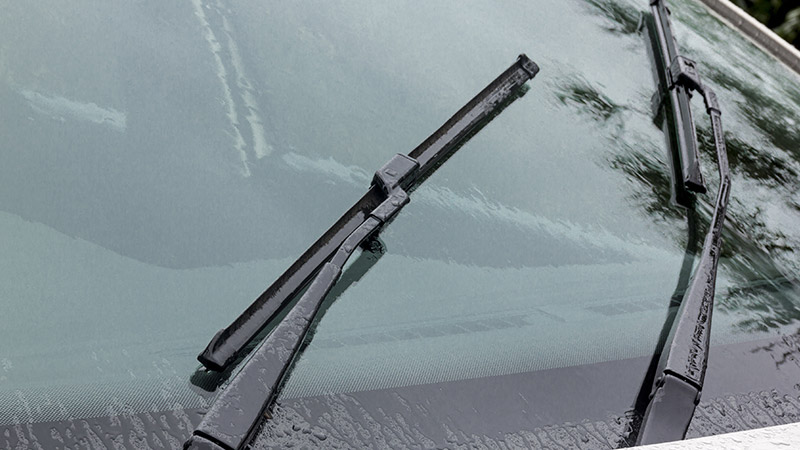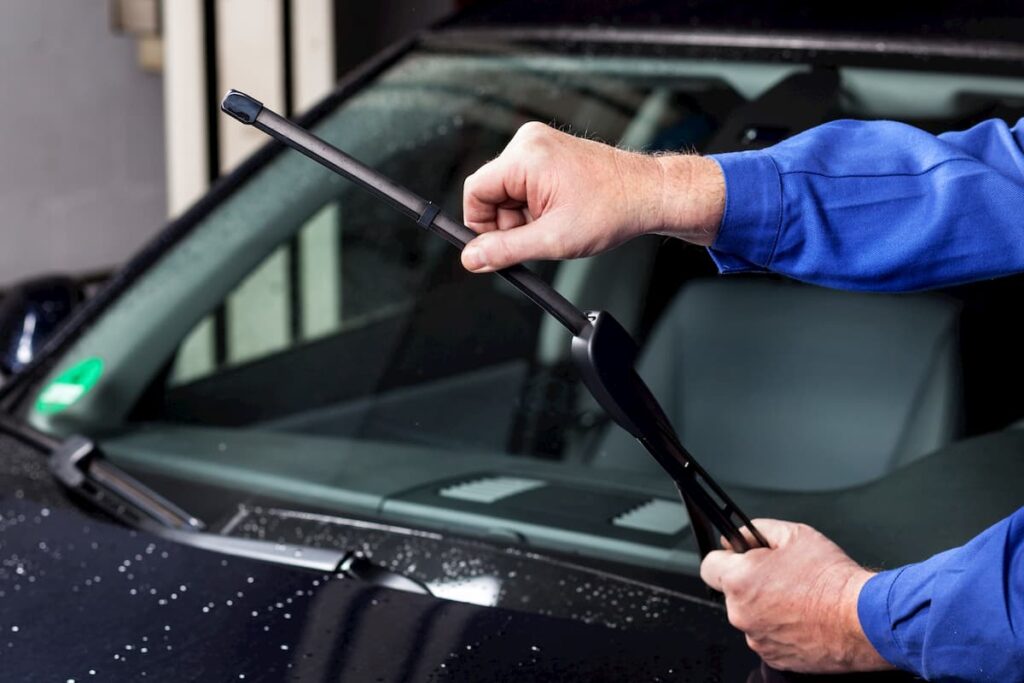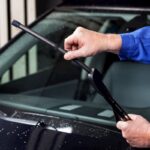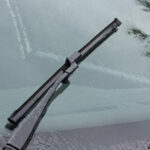Car owners frequently focus on giving their engine and brakes extra attention to ensure their car performs smoothly. However, when it comes to routine car maintenance, windscreen wiper blades are one of the things that most drivers tend to ignore.

But in reality, they are also crucial to your overall safety on the road. In other words, a windscreen wiper makes sure you can see while driving, especially whether it’s raining or you find yourself in the middle of a sandstorm. It is an essential component of your car that keeps you safe, especially while travelling in bad weather.
Do My Wipers Need Replacing?

It’s generally a good idea to replace your windshield wipers every six months to a year, depending on the material of the blades and the weather. There are a few signs that can tell you it’s time to get new windscreen wiper blades, such as:
- Streaking: If your wipers are leaving streaks of water on your windshield, they may not be making proper contact with the glass. This could be due to worn-out blades or a problem with the blade arm.
- Making noise: If your wipers are making a lot of noise or vibrating as they move across the windshield, it could be a sign that the blades are worn out.
- Splitting: If you notice cracks or splits in the rubber part of the blade, it’s definitely time to replace them.
- Dryness: If the blades are no longer flexible and feel dry and hard, they are probably worn out and should be replaced.
It’s important to keep the car blades in good condition because they play a crucial role in your visibility while driving. If you’re not sure whether it’s time to replace your wipers, you can check the manufacturer’s recommendations or consult with a mechanic.
How to Choose Replacement Windscreen Wiper Blades

Get the Right Size
Longer blades that come with a metal frame and squeegee integrated into one assembly may jam and collide. This can cause motor failure or blade damage to occur quickly. Additionally, the blade’s impact may harm your windscreen trim. Because the blade is not clearing the full glass, oversized blades may not follow the curvature of a windscreen, decreasing visibility.
On the other hand, blades that are too short won’t be able to completely clean the windscreen. So, you need to make sure to get the right size for your weathershield.
For every make, model, and year, vehicle manufacturers advised using particular blade sizes. Here are a few methods for choosing the correct size for your vehicle:
- Check the owner’s manual.
- If that didn’t help, measure the wiper blades currently on your automobile. Given that many automobiles utilise blades of various lengths, it is crucial to measure both blades. And if you have one, don’t forget to measure the rear wiper as well.
- Consult with the dealers at the car parts shop. All shops include a chart for looking up wiper blade/squeegee sizes. Alternatively, you can request that the salesperson measure the blades your car requires.
Consider the Different Types
There are numerous types and materials for wiper blades. Although just the rubber squeegee can be bought and installed, changing the entire windscreen blade assembly is more cost-effective. Some of your options are as follows:
- Rubber squeegees – These are the most popular and least expensive. If they have worked for you so far, feel free to continue using them.
- Silicone squeegees – These are more expensive than rubber squeegees. They are quieter than rubber, can last up to twice as long and also remove more water with each stroke.
- Beam wiper blades – These are more flexible and exert more pressure uniformly across the entire windscreen than rubber models, but they often cost twice as much. They are therefore better suited for automobiles with bigger, curved windscreens.
- Winter wiper blades – These are the priciest options. To prevent ice and snow from freezing or clogging the frame, these wipers are thicker and wrapped in plastic or rubber. Frozen frames become rigid and won’t be able to completely clean the windscreen.
Installation

It’s simple to change your blades. You just need to:
- Raise the metal wiper arm so that it is perpendicular to your windscreen and raise it away from it.
- Find the connection where the rubber blade attaches to the metal arm and unhook the old blade there.
- Put in the new wiper.
- Go over the same steps with the other one.
You can always go to your nearby mechanic if you need help with this.
Maintenance Tips
Clean the wiper squeegees by wiping the whole length of the squeegee with a clean, soft cloth dipped in a pre-mixed windshield washer solvent or isopropyl (rubbing) alcohol diluted in water. Protect the finish of your car by rinsing it with fresh water.
Run the wipers occasionally because the cleaning edge of the squeegee needs to “flip” with each swipe to the windscreen. Too much time spent in one position might cause a wiper to dry out and lose its ability to flip. As a result, the wipers jump across the windscreen and generate streaks because the squeegees are pushed rather than dragged.





















